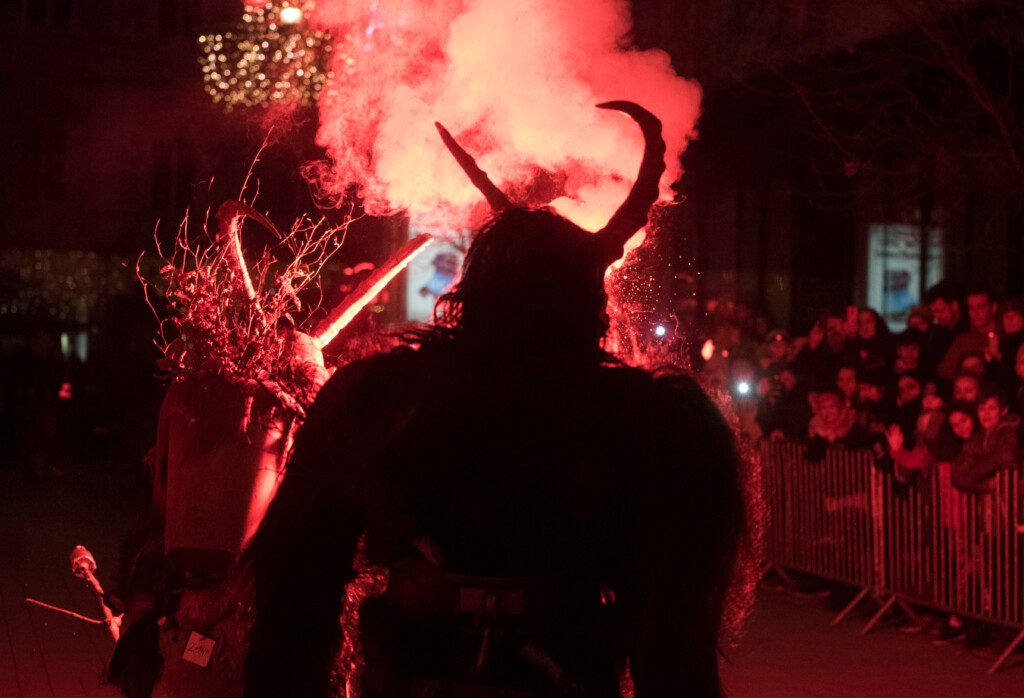Every child looks forward to the day when a white-haired , sympathetic man dressed in red comes to give presents. Smaller and bigger, but enthusiasts can also be found amongst adults. As with everything, there is a saying that applies to the celebration of this day: Different country, different morals. The celebration differs from country to country, somewhere there are more differences, somewhere less. If you will be spending this festive season working abroad, it will come in handy to know how it is celebrated in those countries. In the same way, in each state, the figure resembling the dear old man is called differently. In Slovakia and the Czech Republic he is known as Nicholas.
How did it all started?
Nicholas was a bishop living and working in Myra, in today´s Turkey. Although we would search in vain for a town under this name, we can find it near Demre in the popular holiday resort of Antalya. Legend says that Nicholas helped a poor man who had three daughters. He was almost forced to make them into handmaiden because he was poor. Because he couldn’t provide them with dowry. At that time, the rules were that a woman could not get married without it.
It is said, that Nicholas became an orphan at a young age and inherited a large fortune from his parents . It is also said, that he placed a lump or bag of gold (sources vary in this fact) on the window of the man’s house. It repeated three times. This saved his family. Thanks to this, the tradition of giving gifts was born. The day he died is celebrated in most countries as St Nicholas Day. His generosity and goodness are remembered. It is said that the giving of sweets originated in the Netherlands, from where it spread to North America. The second version is that the custom came from Germany.
St. Nicholas Day in the Netherlands
In Dutch, the name of the man is Sinterklaas. Already on the first Saturday after 11th November he arrives by steamer from Spain, where he lives for the rest of the year. Together with Black Peter, who replaces the devil (typical for other cultures), they come to reward the good children and reprimand those who disobeyed. The story says that Black Peter entertains the obedient children and takes the ones who are the opposite, back in the sack with him.
Dutch towns celebrate this holiday in a different way. Although there are parades everywhere, during which Sinterklaas visits them, he arrives by different means of transport. Sometimes he arrives by boat, sometimes by horse or carriage, sometimes even by helicopter. He visits hospitals and schools, where he donates to children. In return, they leave a bowl of water, carrots or hay for his reindeer to refresh themselves. On the eve of the holiday, families gather for a dinner together. On the table there are also cookies in the shape of St. Nicholas. They enjoy marzipan sweets and almond gingerbread. After Sinterklaas delivers all the goods, he is said to be returning from the port of Rotterdam back to Spain.

St. Nicholas in Belgium
Just like in the Netherlands, St. Nicholas is accompanied by a helper, Black Peter. Ancient legends claim that they come together from Spain. And the children believe that they live there with the dwarfs. They arrive in Belgium on 5th December on white horses, riding on rooftops and sending presents to children through chimneys. The figure of the helper does not depict an evil being, nor is it a symbol of the devil. Belgian children receive bigger and more valuable gifts on this holiday , and at Christmas they are gifted with little things and sweets. Some families leave water by the fireplace for St. Nicholas’ horses, some children persuade their parents to leave a jug of beer for St. Nicholas. Preparations for the festive day begin in early November. As Belgium is known as the land of chocolate, the shops are full of chocolate St Nicholas figurines. The largest of them are more than half a metre high.
St. Nicholas in Germany
Celebrations vary from region to region. In Bavaria, Nicholas is accompanied by the terrifying Krampus. In the other regions, he is accompanied bythe servant Ruprecht. Both Krampus and Ruprecht are synonymous with the devil, but Ruprecht is not so fearsome. They try to scare the children to avoid naughty behaviour in the future. Several regions are known for children putting hay and carrots in their shoes for St Nicholas’ horses or reindeer. It is traditional to eat sourdough pastries in the shape of St Nicholas, which is similar to the Dutch tradition. Another typical dish on this day are baked apples with vanilla cream filled with nuts, raisins and sugar or pancakes.
St. Nicholas in Austria
In the evening before the feast of St Nicholas, a figure dressed in a bishop’s costume called St Nicholas walks through the streets of the city. He does not walk alone, but is accompanied by a group of krampuses, ghostly figures in wooden masks, fur coats and with clanging cowbells, armed with twigs and ashes to punish those who have been bad. In Austria , the Krampus is a typical figure of the St. Nicholas season, as in Bavaria. The ritual of the March of the Devils, as the procession is known, spread to Austria from Alpine villages and has become very popular in recent decades. Hundreds of visitors from all over the region attend these events. In other places, however, Saint Nicholas still goes from house to house to visit families. Before handing out the goody bags, he listens to the children and tells them to be better next year.

St. Nicholas Day in Hungary
In Hungary, St Nicholas visits children throughout the country in the evening of 6th December. Instead of stockings over the fireplace, children put their shoes in the window to fill them according to whether they have been good or not during the year. In the past, obedient children were rewarded with a selection of sweets, seasonal fruits and nuts. At the moment they are more or less getting sweets and chocolate. One of the things they will find in their package is chocolate in the shape of St. Nicholas. Disobedient children are given a rod that resembles a small broom made of twigs, symbolizing that they will receive a punishment.
Of course, no one is just good or just bad, so kids usually find both goodies and rods in the shoe . St. Nicholas visits kindergartens and schools (even universities). The children prepare songs and poems which they sing and recite. St. Nicholas is accompanied by the character of Krampus, who has the task of scaring misbehaving children. They have the opportunity to sit on St Nicholas’ knee and talk to him about their behaviour during the year. Even adults wear St. Nicholas hats everywhere on this day . These traditions are also very similar in other countries.
St. Nicholas Day in Croatia, Romania, Poland
In Croatia, St Nicholas is also accompanied by the devil Krampus. In the same way, the children prepare their clean shoes on the window on the eve of the day , in which they will find a gift – sweets, fruit or dried fruit in the morning. In Romania, Mos Nicolae walks around leaving children slippers or winter boots filled with sweets, trinkets and fruit on the night from the fifth to sixth of December. Disobedient children will be given rods as punishment . Along with the sympathetic man goes Krampus, who also leaves rods here. The tradition of St. Nicholas Day in Poland is a combination of both Western and Eastern influences. In Polish it is Mikolaj who comes to the children on 6th December and leaves chocolates and sweet treats in their Christmas stockings at home or visits them in schools and kindergartens.
St. Nicholas in Bulgaria
Here it is not St. Nicholas who is celebrated, but Nikulden. It’s a different holiday . Neither St. Nicholas, nor the angel, nor the devil comes. This tradition is not known in Bulgaria . This day is a celebration of the names of Nikolas and Nikolai, which are variations of the name Nicholas. During this holiday day, they eat fish dishes, most often carp with stuffing. It is filled with mushrooms, onions, carrots, rice and spices.
As can be seen, many elements of St Nicholas celebrations are quite similar, but we can also observe noticeable differences. The traditions converge depending on the countries that are geographically close to each other.
What traditions do you practice on St. Nicholas Day at home with your families and loved ones?







